The annual Sox Machine list of top 10 White Sox prospects usually started out with a meta, discursive preamble about the pointlessness of ranking players. The information mattered more than the number, and the exercise preceding the rankings contained more meat per player, anyway.
Still, the system beneath the rankings was fairly straightforward, and provided another metric to consider, because they were ranked by which ones the White Sox would most regret trading.
Alas, that system had to be adjusted because two things changed.
No. 1: Unfortunately, the White Sox no longer had to worry about trading away prospects for immediate help (Cristian Mena excepted).
No. 2: Fortunately, James Fegan came aboard with his own wealth of knowledge about the White Sox farm system.
We still went about Prospect Week the same way, covering more than 50 White Sox prospects across five shared narratives:
- Wrangling 2024 White Sox Prospects: Sticking points
- Wrangling 2024 White Sox Prospects: Too early to tell
- Wrangling 2024 White Sox Prospects: Onward and upward
- Wrangling 2024 White Sox Prospects: New in town
- Wrangling 2024 White Sox Prospects: When injuries interfered
When it came to ranking the prospects, we independently came up with our top 10 lists, then tried to figure out the best way to figure out how to present the (genial) agreement and (violent) disagreement.
What follows is the result of that process, exclusive to the fine supporters of Sox Machine.
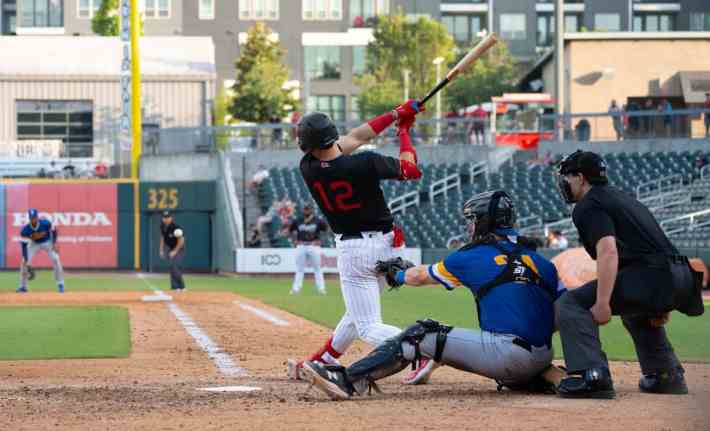
No. 1: Colson Montgomery
Fegan: He's the best.
Margalus: I agree.
Fegan: I had a scout give a negative review to Montgomery’s defense in the Arizona Fall League, giving rise to the idea that he might be better off in the outfield – and in a corner – than on the dirt entirely. It’s not a consensus opinion by any means. But if Montgomery was a left fielder, with near-major league ready power and patience-fueled offense, would he still be the team’s No. 1 prospect? I would argue yes, especially if his feel to hit resembles more his rehab tour of age appropriate competition in A-ball this past season than his first short dip against the higher levels. Star-level bats are rare, and this could be one.
Margalus: Yeah, you just can't take a White Sox player who commands a strike zone and damages pitches for granted. The shortstop question is a valid one, and I'm open to the idea that he'll regain some fluidity at the position over the winter, but it also feels like a luxury. A Montgomery who plays an average, no-doubt short would truly be having it all.
Why Ramos is here: My Bryan Ramos Hipster Cred Card is up for renewal, so I need to be more enthusiastic about him than the field once again. Beyond that, I just believe in the way he's developed to date. He suffers an injury, he plays through or around it. A gap in his game starts to open, and he closes it. I don't think Ramos has the kind of ceiling normally associated with a No. 2 prospect (at least a No. 2 prospect in a middle-of-the-pack system), but given his steady young-for-level success up the ladder and his walk rates show a thought process behind a let-'er-rip swing, and he hasn't given a reason to count out surprising MLB production, either.
Why Quero is here: The floor for Quero providing value just seems rather high. No one talks about him as God’s gift to receiving, but coaches laud his feel and willingness to learn, which provides a lot of confidence for him to stick behind the plate in a situation where he will have every opportunity. The power fluctuation makes stardom doubtful unless you define stardom as “have multiple 3 WAR seasons,” and maybe the past few years have beaten you down to that point. But swing decision and contact profile makes it easy to envision him starting at catcher through his first six years.
It is also easy to imagine him maturing into one of the slowest big leaguers around, but that seems a little far down the road.
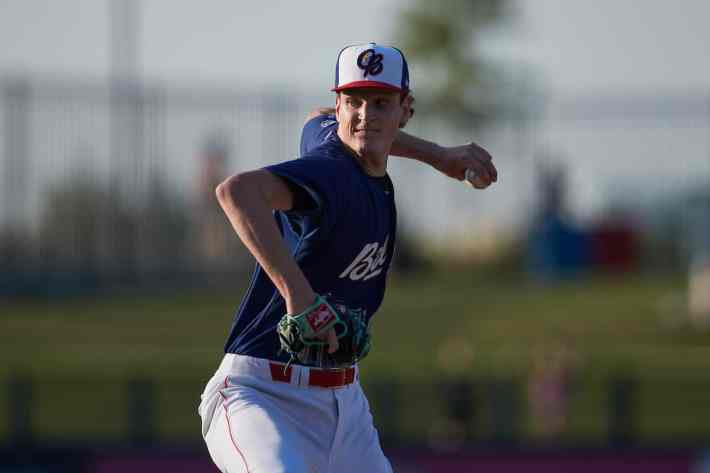
No. 3: Noah Schultz
Fegan: The excitement of seeing Schultz’s 27 innings has seemingly obscured that there was not substantial change in “monstrous stuff, durability questions” shape of his profile. Schultz immolated Low-A hitters but also had a forearm strain and shoulder impingement in Year 1. I was tempted to place him behind Nastrini, because the path that Schultz has to tread to reach that level of proximity to the majors looks very perilous at the moment. Then I caved and reasoned we’re living in the age of Stuff metrics and that Schultz’s trade value is high, and I should calm down.
Margalus: I toggled between Ramos and Schultz for the spot behind Montgomery, but the comparison between Schultz's workload and Norge Vera's made it a little too easy to picture a future where Schultz never quite gets a grip on the every-five-days thing, and the exuberance looks slightly misplaced.
Why Quero is here: I have no idea why the Angels thought it was a good idea to promote Quero from Low-A Inland Empire to Double-A Rocket City, especially once the adoption of the enhanced-grip ball meant that the Southern League was going to be friendlier to pitchers than usual. He kept his head above water, which is no small feat for a 20-year-old, but it hampered his ability to impress, and he had to settle for being quietly respectable on most fronts. That could turn into the White Sox's gain, because were Quero on track for 20 homers with the Tri-City Dust Devils, perhaps the Sox aren't able to acquire him and Ky Bush for a pair of rental pitchers. Still, I'd like to see a little more Double-A power to go with that OBP, or further defensive improvement that makes him a more well-rounded. There isn't any rush.
Why Ramos is here: I largely just agree with all the reasons Jim had Ramos higher but am a coward. Ramos has the swing and power to consistently perform, but has not dominated at any point to build more confidence that he can be a lineup anchor. He’s worked very hard on his body to avoid a move off third, but is a little too spotty with his throwing to project him as a plus defender. But he won’t turn 22 until next month, so maybe I’m just being a coward.
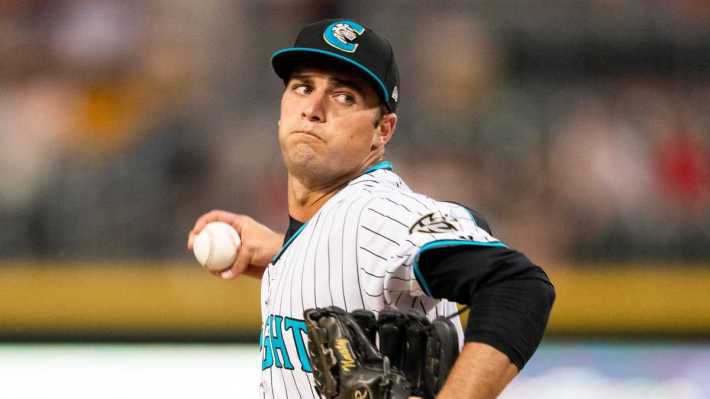
No. 5: Nick Nastrini
Fegan: Even before Cristian Mena was dealt and even assuming a fully healthy Sean Burke, Nastrini should be the first pitching prospect to graduate and earn a major league debut this season. That proximity and demonstrated bat-missing stuff should be a big boost, but Nastrini has also demonstrated a history of not having front of the rotation command that pushes us to a middle ground.
Margalus: There are two Nastrini quotes from his introductory Zoom call with reporters that frequently come to mind. The first was when he negged his new team by comparing the White Sox to his ex:
“The Dodgers are very good at development, and when you’re so good at development, you have an insane amount of players who are very, very good. There’s a little bit of a roadblock in the system. Here, there’s a much more clear path to the big leagues and getting to Chicago as quickly as possible. That’s kind of the way I’ve been viewing it.”
The other is simpler: "If I'm executing that day, good luck." This is a true sentence, and probably truer than Nastrini would care for it to be, because it starts with "if." It's a big "if," but the potential for reward is there, and the White Sox have all the opportunity -- and some new resources -- to try to reduce the doubt.
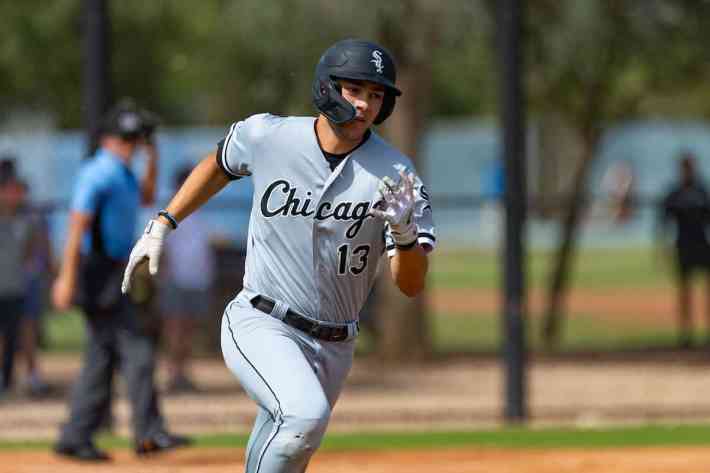
No. 6: Jacob GOnzalez
Margalus: He has to be better than this, right?
Fegan: But what if he isn't?
Margalus: And that sums up the tension here. We’ll let the readers determine if the structure of this top prospect list works, but if people want a peek into the artist’s process, I built it out from the weird development where the White Sox have a consensus No. 6 prospect. This seems to be the only place to put Jacob Gonzalez, because his pre-draft forecast is too recent to put him behind any of the other players who follow, but the whisper-quiet start of his pro career – and the fact that he was drafted by a front office that was fired soon after – makes it hard to place him above the players who were actually doing good-to-great things.
I knew who I was going to rank first. I knew who I was going to rank sixth. Everybody around them required a lot more thought.
Fegan: It was a dispiriting look, with real issues on covering the outer half of the plate to address. But all the caveats about a pro debut after a college campaign apply, and we need to see what he looks like after an offseason bulk-up and professional improvement plan. Everyone behind him either lacks his pedigree or has looked wonkier for longer.
Why Eder is here: In the distant time of last July, scouts I spoke to were confident that this trade was a coup for the White Sox. That Burger’s contact and approach issues would be limiting throughout his career, and that when last healthy, Eder had looked like an absolute monster. Perhaps that last part is still true, since Eder working in the low-90s last summer didn’t look like someone at peak performance. There are both mechanical and health reasons for why Eder’s heater could be more lively in the future, but his 2021 strike-throwing only looks like more of an isolated incident with time. Wait, I’m supposed to be talking up why I rated him so high. Well, it’s a 70-grade left-handed slider.
Why Veras is here: The yawning strikeout-to-walk chasm scares me, too, but after hitting .309/.346/.533 over 38 games at Double-A to end his age-20 season, it's a little easier to see the ways he can overcome it. I've reframed his case as a Micker Adolfo who stayed perfectly healthy, and I also wonder if it's fair to call him a poor man's Eloy Jiménez. Actual Eloy Jiménez was a consensus top-five prospect in all of baseball, so I think the guy who continuously hits the ball hard amid all the questions about his path forward is good for No. 7 in a OK system.
Why Eder is here: Going back to Gonzalez and revisiting the theme of products of a broken system, I haven't been able to shake the idea that the Jake Burger trade was Kenny Williams' parking meters deal. Like Gonzalez, it doesn't seem like it should be this bad, and with Tommy John surgery an even smaller speck in his rear-view mirror, I'd expect some sort of rebound after a standard offseason ... but walking 30 batters over his first 35 innings in the White Sox system is how the disaster scenario would start.
Why Cannon is here: This is where I start to think all my prospect rankings are the symptom of a disordered mind. Just swinging constantly between prioritizing ceiling and safety like someone who can’t figure out their life dir–yeah so Cannon pours in strikes with a wide variety of pitchers with solid average to plus velocity out of an ideal starter build. There’s a nice supply of starter safety here and maybe he’ll happen upon a changeup grip that pops for him.
Why Fletcher is here: Now it's my turn to rush toward certainty and pick the 5-foot-6-inch 26-year-old right fielder with 28 decent MLB games under his belt. I'm not inclined to penalize him for his age because the lost pandemic year put him behind that curve. The lack of power for a corner outfielder is the bigger problem, but a Fletcher who provides a top-of-order threat against right-handed pitching and plays a plus right field can easily be valuable enough to warrant a mention.
Why Burrowes is here: I don’t want to say “high floor” here because Burrowes slugged .386 in the complex league last season and his floor is “not making the majors.” Even with all due respect to myriad difficulties faced by Latin American prospects who begin their career as teenagers, that is not a high floor. He’s got the frame and athleticism to stick at shortstop with potential for average power production if his approach advances. It’s a good starter kit.
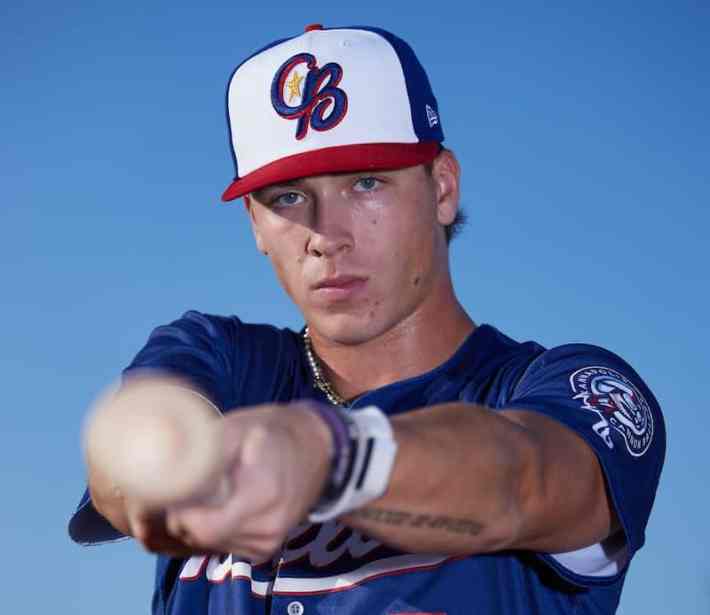
No. 10: George Wolkow
Fegan: Wheeeeeeeeeeeeeeeeeeeee!
Margalus: Downers Groooooooooooooooove!
Fegan: If we simulate the next 10 years 100 times, Wolkow will have a lesser career outcome than a lot of guys not listed here a lot of times. The simulations where it all clicks for Wolkow though? They absolutely rip. He’s hitting 35 homers per year and then ducking fans after the game by flying away in a jet pack that actually does carbon capture at the same time it’s flying, but then all the fans catch him because the jetpacks are government subsidized–well, look at me getting ahead of myself again. It’s a high ceiling.
Margalus: Also, Downers Groooooooooooooove!
Jim Margalus' Top 10 White Sox Prospects
- Colson Montgomery
- Bryan Ramos
- Noah Schultz
- Edgar Quero
- Nick Nastrini
- Jacob Gonzalez
- Wilfred Veras
- Jake Eder
- Dominic Fletcher
- George Wolkow
Honorable mentions:
Cannon makes the cut on a list where my misses cost me money, and Jordan Leasure originally made my top 10 until I realized I could crowd him out with starting-caliber pitchers and position players. I'm curious whether Grant Taylor can distinguish himself from Peyton Pallette, who could stand to distinguish himself from Tanner McDougal. I'm interested in seeing more of Brooks Baldwin and Ronny Hernandez, mostly because I want to better understand their respective deals, and you can tell I didn't write up either Ryan Burrowes blurb during Prospect Week, because you didn't see the words "Safari Planet."
James Fegan's Top 10 White Sox Prospects
- Colson Montgomery
- Edgar Quero
- Noah Schultz
- Bryan Ramos
- Nick Nastrini
- Jacob Gonzalez
- Jake Eder
- Jonathan Cannon
- Ryan Burrowes
- George Wolkow
Honorable mentions/favorite prospects:
Beyond Dominic Fletcher, Zach DeLoach, Prelander Berroa and everyone acquired this month that I didn’t consider enough? There’s a stiff drop-off after the top five where we have a couple of prospects coming off bad seasons belying their larger reputations, a safe-ish back end starter prospects, then a pair of chucks at the dart board. The healthy version of Burke that pitched in 2022 would probably be up here. If José Rodríguez has a bounceback season, his proximity to the majors would make it easy for him to zoom up here.





